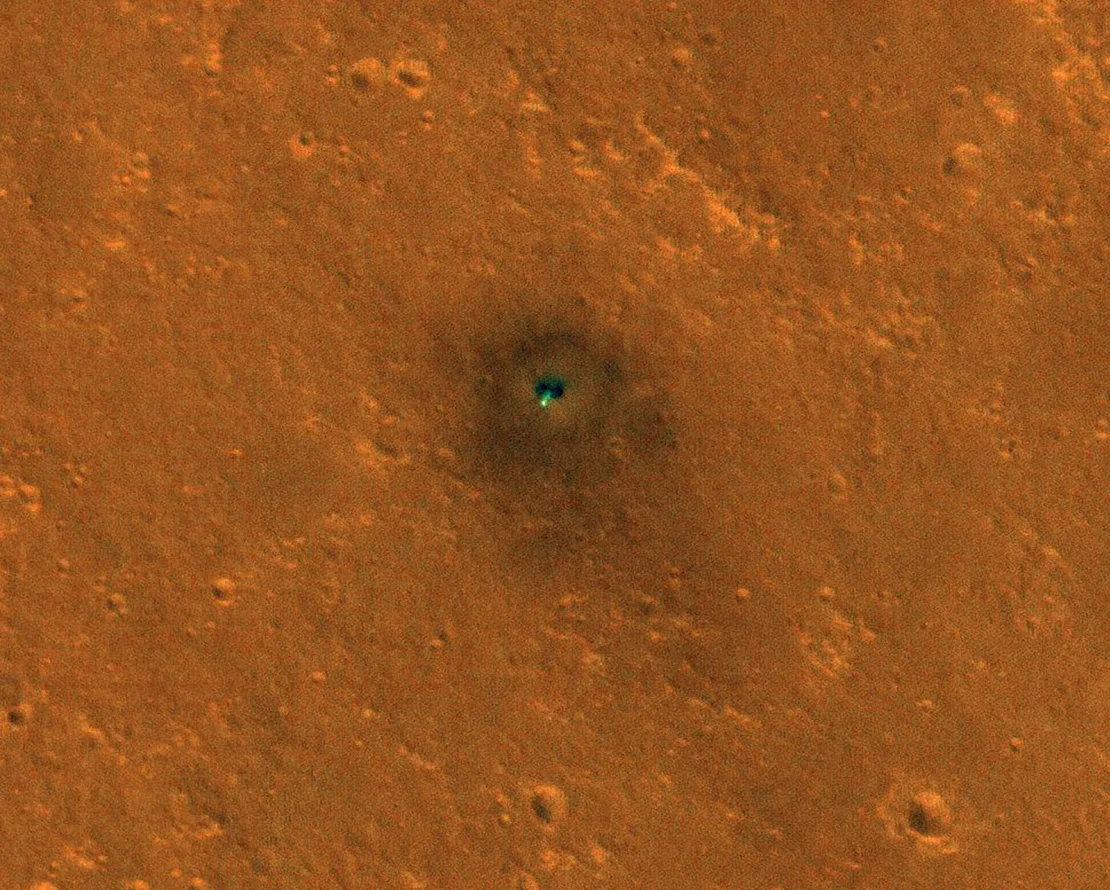Huge hidden ocean found beneath Mars could have life

Scientists analyzing data from NASA's InSight Lander have discovered a possible underground reservoir on Mars, which could hold enough liquid to cover the planet with a mile of water.
Geophysicists have found a huge hidden ocean beneath Mars' surface, and they believe it could potentially support life.
Using seismic data from NASA's InSight Lander, scientists discovered an underground reservoir that contains enough liquid to cover Mars with a mile of water. However, it’s too deep to reach with current technology.
The water is trapped in a layer of fractured rock 7 to 13 miles (11.5 to 20 kilometers) below the planet’s surface, and getting to it would require drilling deeper than we've ever done on Earth.
If humans can reach it someday, scientists believe it could be a good place to search for life. The researchers shared their findings on August 12 in the journal Proceedings of the National Academy of Sciences (PNAS).
"Water is necessary for life as we know it," study co-author Michael Manga, a professor of earth and planetary science at UC Berkeley, said in a statement. "I don't see why [the underground reservoir] is not a habitable environment. It's certainly true on Earth — deep, deep mines host life, the bottom of the ocean hosts life."
"We haven't found any evidence for life on Mars, but at least we have identified a place that should, in principle, be able to sustain life," Manga added.
Dried-up river channels, deltas, and lake beds on Mars show that water once flowed on the planet's surface. However, about 3.5 billion years ago, Mars' climate suddenly changed, causing the water to disappear.
Scientists aren't sure what caused this rapid drying up. Possible reasons include the loss of Mars' magnetic field, an asteroid impact, or even ancient microbes that triggered climate change. Figuring out what caused it and where the water went has become a key question for researchers.
To look for clues about Mars' interior, researchers used data from NASA's InSight lander, a robotic lab that studied the planet's interior from 2018 to 2022. InSight's sensors recorded quakes up to magnitude 5, caused by meteor impacts and volcanic activity, which helped scientists understand more about what’s happening beneath Mars' surface.
The scientists used this data in a mathematical model, like the ones used to find water and oil on Earth. This helped them map Mars' interior, revealing details like the thickness of the crust, the depth and makeup of the core, and even some information about the temperature inside the planet, according to Manga.
Researchers found that the deeper crust of Mars likely contains broken igneous rock with enough liquid water to fill oceans. This suggests that Mars’ water didn’t escape into space billions of years ago but instead soaked into the planet's crust.
Right now, reaching this hidden ocean is beyond our abilities (the deepest hole ever dug on Earth is only 7.6 miles). But it's not the only place scientists are looking for signs of life on Mars.
NASA’s Perseverance rover, which has been collecting geological samples in Jezero Crater since 2021, may have already gathered Martian dust or even evidence of ancient life.
NASA originally planned to bring back these samples by 2026, but due to budget issues, this has been pushed to 2040. The agency is now looking for help from private companies to speed up the mission.
Thanks for visiting Our Secret House. Create your free account or donate by signing up to never miss any news!





